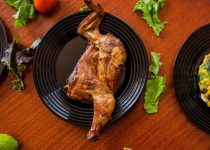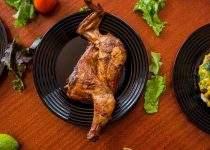Efficient BBQ Griller Events: Managing Temperature Tips
Are you tired of overcooking or undercooking your BBQ? Want to master the art of temperature control? Look no further!
In this article, we’ll provide you with essential tips to efficiently manage the temperature of your grill. From the importance of temperature control to understanding direct and indirect heat, we’ve got you covered.
With our expert advice, you’ll be able to preheat your grill perfectly and adjust the temperature on different grills like a pro.
Get ready to serve up perfectly cooked BBQ every time!
Table of Contents
Key Takeaways
- Precise temperature control is crucial for achieving even cooking and flavorful results.
- Preheating the grill ensures even heat distribution and prevents food from sticking.
- Understanding the difference between direct and indirect heat helps in choosing the right cooking method for different cuts of meat.
- Adjusting the temperature on different grills can be done through grill maintenance, cleaning, airflow control, and fuel manipulation.
Importance of Temperature Control
To achieve perfect grilled dishes, you must master the art of temperature control. Using the right temperature control techniques is essential for achieving consistent and delicious results every time you fire up the grill. The benefits of precise temperature control can’t be overstated.
One of the key benefits of precise temperature control is that it allows you to cook your food evenly. When the temperature is too high, the outer layers of your food may burn while the inside remains undercooked. On the other hand, if the temperature is too low, it will take longer for your food to cook, resulting in a dry and flavorless outcome. By maintaining the ideal temperature, you ensure that your food cooks evenly, resulting in a juicy and flavorful end product.
Another advantage of temperature control is that it allows you to achieve the desired level of doneness. Whether you prefer a rare steak or a well-done burger, precise temperature control enables you to cook your food to perfection. By monitoring and adjusting the temperature, you can achieve the ideal level of doneness for different types of food.
Types of Thermometers for Grilling
Choose a reliable thermometer to accurately monitor the temperature of your grill while cooking. There are several grill thermometer options available, including wireless thermometers. Here are three types of thermometers commonly used for grilling:
-
Instant-read thermometers: These thermometers provide a quick temperature reading and are perfect for checking the doneness of your food. Simply insert the probe into the thickest part of the meat, and within seconds, you’ll know the internal temperature.
-
Leave-in thermometers: Also known as probe thermometers, these thermometers are inserted into the meat before cooking and remain in place throughout the grilling process. They allow you to monitor the temperature continuously without opening the grill, ensuring your food is cooked to perfection.
-
Wireless thermometers: These thermometers provide the ultimate convenience as they allow you to monitor the temperature of your grill from a distance. They consist of a transmitter that sends the temperature readings to a receiver, which you can carry around with you. This way, you can keep an eye on the temperature while mingling with your guests or preparing other dishes.
Preheating Your Grill for Perfect Results
Get your grill fired up for optimal results by preheating it to the desired temperature. Preheating your grill is an essential step in achieving perfect results when cooking. Not only does it ensure even heat distribution, but it also helps to prevent food from sticking to the grates.
To preheat your grill, start by cleaning the grates thoroughly. This is an important part of grill maintenance as it helps to remove any leftover residue from previous cooking sessions. Once the grates are clean, choose the right fuel for your grill. Whether you prefer charcoal, propane, or natural gas, selecting the appropriate fuel is crucial for achieving the desired temperature.
When using charcoal, make sure it’s fully lit and covered with a layer of ash before placing your food on the grill. If you’re using a gas grill, turn on the burners and allow them to preheat for a few minutes. This will ensure that the grill reaches the desired temperature before you start cooking.
Understanding Direct and Indirect Heat
To achieve optimal grilling results, it’s important to understand the difference between direct and indirect heat. Grilling techniques and heat management play a vital role in determining the flavor and texture of your food.
Here’s what you need to know:
-
Direct Heat:
-
This method involves placing the food directly over the heat source, such as hot coals or gas burners.
-
It’s perfect for cooking thin cuts of meat, like burgers and steaks, as it provides high, intense heat.
-
Direct heat gives you beautiful sear marks and a delicious, charred flavor.
-
Indirect Heat:
-
With this technique, the heat source is placed to the side of the food, allowing for slower and more gentle cooking.
-
It’s ideal for large cuts of meat, like roasts or whole chickens, as it ensures even cooking without burning the exterior.
-
Indirect heat creates tender, juicy meat that’s cooked through to perfection.
By understanding and utilizing both direct and indirect heat, you can take your grilling skills to the next level. Experiment with different techniques, and remember to adjust the heat as needed to achieve the desired results.
Happy grilling!
Tips for Adjusting Temperature on Different Grills
To effectively manage temperature on different grills, it’s important to understand the various methods for adjusting heat levels. One key aspect of temperature control is grill maintenance. Keeping your grill clean and in good condition is crucial for maintaining consistent heat distribution. Make sure to regularly clean the grates and remove any grease or debris that can hinder the heat flow. Additionally, check for any clogs in the burner tubes or vents that can affect the heat distribution.
Another important tip for adjusting temperature on different grills is to utilize the grill’s built-in features. Many grills come with adjustable vents or dampers that allow you to control the airflow and, consequently, the temperature. Opening the vents will increase the heat, while closing them will decrease it. Some grills also have adjustable burners, which let you control the flame intensity and heat output.
If your grill doesn’t have these features, you can still adjust the temperature by manipulating the fuel source. For charcoal grills, you can add or remove briquettes to increase or decrease the heat. For gas grills, you can adjust the burner knobs to control the gas flow and heat level.
Resting and Serving: Timing Is Everything
Now let’s talk about the importance of perfect resting times and timing for serving your BBQ.
When it comes to resting, give your meat enough time to relax and redistribute its juices for maximum flavor and tenderness.
As for serving, timing is crucial to ensure that your food is still hot and ready to be enjoyed by your guests.
Paying attention to these details will elevate your BBQ experience.
Perfect Resting Times
Make sure you allow your meats to rest for the appropriate amount of time before serving to ensure optimal tenderness and juiciness. Resting meat is a crucial step that many grillers overlook, but it can make a significant difference in the final result.
Here are a few reasons why resting is important:
-
Allows the juices to redistribute: Resting allows the juices in the meat to redistribute, ensuring that every bite is moist and flavorful.
-
Enhances meat tenderness: Resting meat allows the proteins to relax, resulting in a more tender texture.
-
Helps retain moisture: Resting meat helps to retain moisture, preventing it from drying out during the cooking process.
Timing for Serving
Ensure that you time your serving appropriately to maximize the tenderness and juiciness of your meats. Timing is crucial when it comes to serving your perfectly cooked barbecued meats. After allowing your meat to rest, it’s important to serve it at the right moment to ensure optimal flavor and texture.
To achieve this, you need to consider the serving techniques and food presentation. When it comes to serving techniques, make sure to slice your meat against the grain to enhance tenderness. Additionally, consider the temperature at which you serve your meat. For instance, hot foods should be served immediately, while others may benefit from being served at room temperature.
Lastly, remember that food presentation plays a vital role in the overall dining experience. Take the time to arrange your meats attractively on the plate, and don’t forget to garnish with herbs or sauces to enhance visual appeal.
Frequently Asked Questions
How Can I Prevent My Meat From Drying Out While Grilling?
To prevent your meat from drying out while grilling, marinate it properly and use the best grilling techniques for juicy results. This will help lock in the moisture and ensure a tasty, succulent meal.
What Is the Ideal Temperature for Grilling Vegetables?
The ideal temperature for grilling vegetables varies, but generally, aim for medium-high heat around 400-450°F. Asparagus, peppers, zucchini, and corn are some of the best vegetables for grilling.
Can I Use a Regular Kitchen Thermometer for Grilling?
Yes, you can use a regular kitchen thermometer for grilling, but it’s better to use a specialized grilling thermometer. It offers benefits like accuracy, durability, and features specifically designed for grilling.
How Long Should I Let My Meat Rest Before Serving?
You should let your meat rest before serving to ensure it is juicy and tender. The resting time allows the juices to redistribute, resulting in a more flavorful dish. Serve at the desired temperature.
Are There Any Tips for Maintaining a Consistent Temperature on a Charcoal Grill?
To maintain a consistent temperature on a charcoal grill, here are some tips: control heat by adjusting the airflow, use a chimney starter for even charcoal distribution, and create a two-zone fire for better temperature control.




